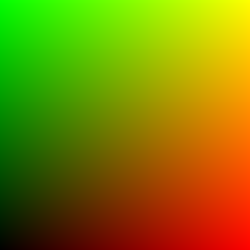A shader is a set of instructions that is executed for every single pixel on the screen. Flutter has support for shaders through the SPIR-V library. But this library comes with a set of constraints, these constraints can make it difficult for developers that are not yet familiar with shaders. And on top of that the API that Flutter provides is not strongly typed and Flutter expects the user of the shader to know exactly in which order the data has to be passed to the shader.
And if you wish to write your shader in GLSL you need to manually compile the shader to a SPIR-V binary through a third party tool and add that binary as an asset to your application.
This is where Umbra comes in, by using Umbra's generation commands you can generate strongly typed Dart files that know exactly what parameters the shader need, in which order the data of those parameters should be passed and it contains the SPIR-V binary so you don't have to do anything related to assets. This makes it easier for users of the shader as they now have a strongly typed API that has parameters with which they are more familiar and it can be used immediately without any other configuration.
❗ Note: As mentioned above there are certain constraints from the SPIR-V library that you have to adhere to while writing your GLSL code. Some of these rules are handled by Umbra while generating the raw GLSL code but it is still recommended to read up on the rules because Umbra is not able to cover them all.
Umbra also takes away some of the constraints and complexity by adding a small abstraction on top of the raw GLSL shader. You only have to write your shader code and Umbra will generate the necessary raw GLSL shader that will be used to compile the SPIR-V binary.
The abstraction is as followed, it expects a function called fragment that receives a vec2 for the normalized pixel position (0..1), we call
this the UV and a vec2 of the real pixel position. The function then returns a vec4 which will be
used as the color for the current pixel.
So a simple shader that follows this abstraction looks like this:
vec4 fragment(in vec2 uv, in vec2 fragCoord) {
return vec4(uv.x, uv.y, 0.0, 1.0);
}As you can see it has a single function called fragment. Which receives an input uv value and an input fragCoord value.
It uses the uv value to return a color that will map the pixel to a redish/greenish color depending on the position.
The result of this shader is this:
For a nice introduction on shaders check out The Book Of Shaders.
For more information on passing data to shaders, see the Uniform documentation.
